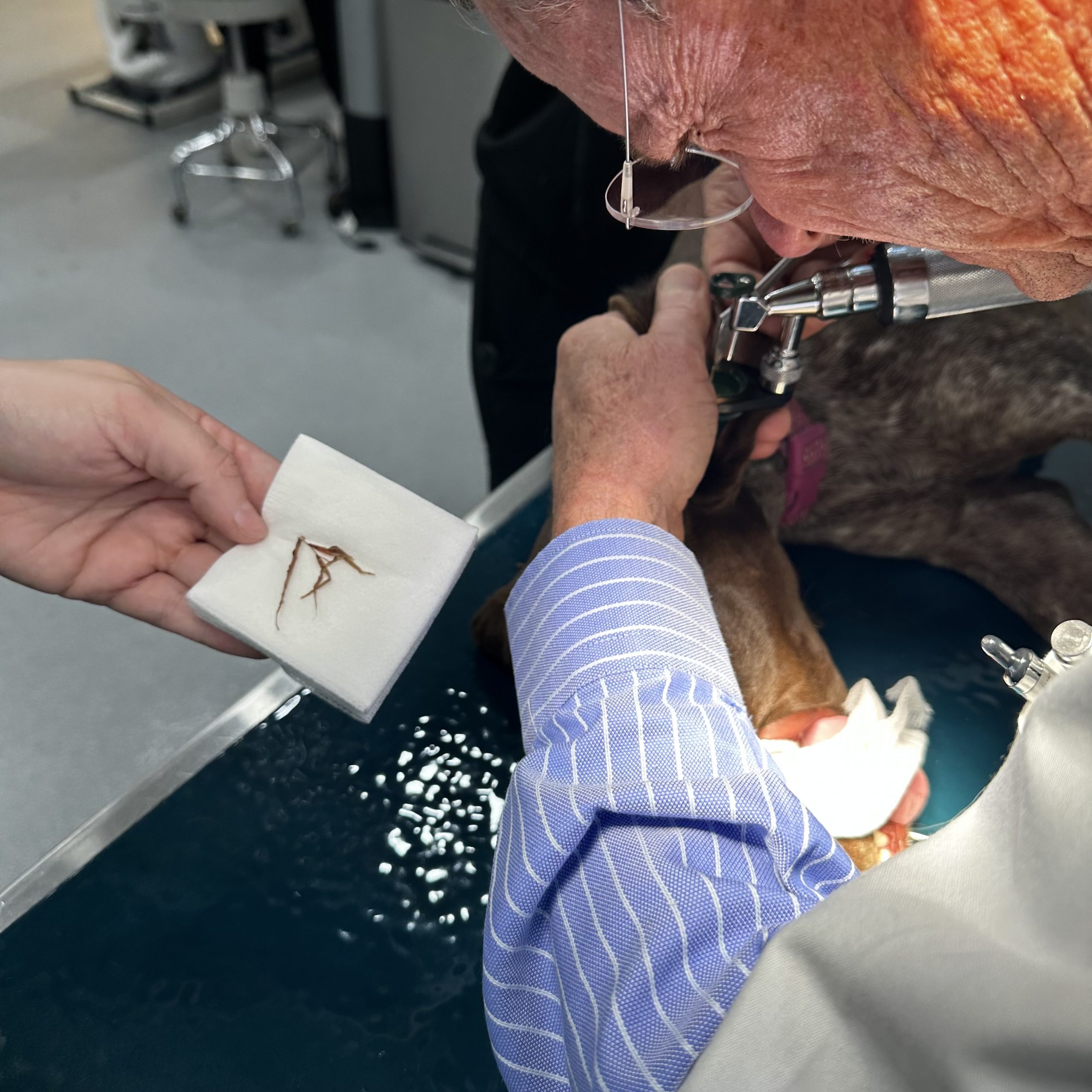Foxtail Signs and Dangers
Foxtail (also known as grass awns) season is in full swing again here in Tulare County. As pet owners it is important for us to stay vigilant and avoid foxtails as much as possible to avoid an unexpected trip to the vet. If any of your pet(s) has walked through these pesky weeds, the barbs on the outer portion may attach themselves to their fur which can cause serious damage. The most common place foxtails like to fasten themselves to is on the underside of the paws and between the toes.
Places foxtails can appear may include:
Eyes: A foxtail in the eye can cause swelling, discharge, corneal abrasions and in extreme cases they can result in eye loss. Keep an eye on your pet(s), if they are pawing at their face or rubbing their head as this may be a sign of a foxtail.
Ears: When lodged in the ear, foxtails can cause your pet(s) to continuously shake their head or scratch at their ears.
Nostrils: A foxtail inhaled through the nose often manifests as a sudden onset of sneezing and is sometimes accompanied by bloody discharge.
Mouth/Throat/Gums: When ingested, foxtails can cause sudden and acute coughing and hacking. This symptom or sign can also be associated with kennel cough or upper respiratory infections so the best way to prevent the ingestion of a foxtail is to keep your pet(s) away from them as much as possible.
Foot/Paws: Foxtails burrow themselves between toes and can be hard to spot and remove especially on those pets with “grinch” feet. If your pet(s) suddenly starts to chew at their paws, or limp, they may have a foxtail that has burrowed in there.
We recommend clearing those weeds out of your yard as soon as possible and carefully inspecting your pets from head to toe after each walk or venture outdoors. Be on the lookout for foxtails and remove them immediately when spotted or if your pet(s) are showing any signs.

